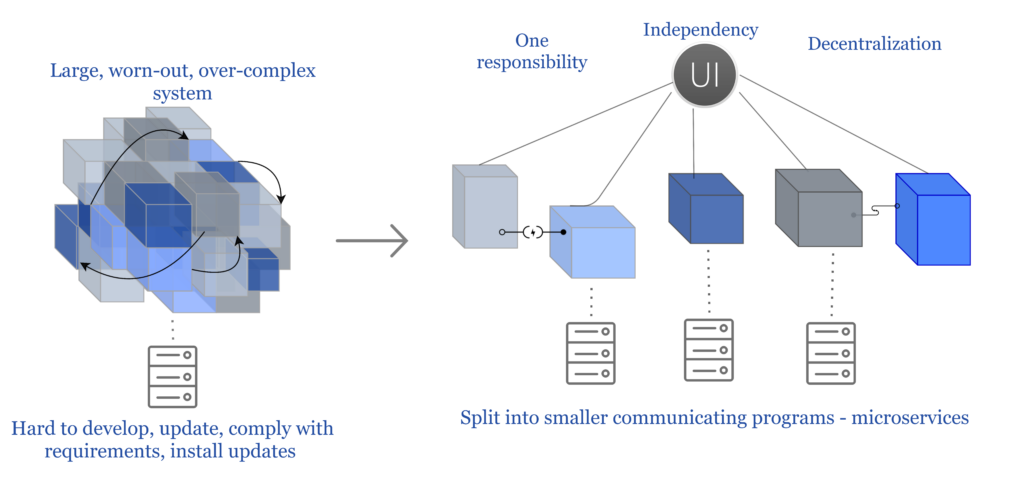It is not a rare case, that organizations work with information systems that are linked to a single and often old technology.
As digital activities expand, information systems grow and expand too, making old large systems difficult to maintain and update due to their size and complexity, specifically if one desires to do so without stopping the work of the entire system.
Therefore, new technologies are needed that allow you to quickly install updates or to correct errors. Microsystem architecture is useful for this purpose.
With its help, a large monolithic program is divided into several smaller autonomous programs, which have their purpose and closely cooperate.
Such a solution is relevant for businesses and organizations to develop new complex or large-scale systems, upgrade worn-out systems to ensure their high availability and reliability, error resilience, and the ability to expand them.
This architecture is also beneficial to use for frequent updates or for quick development of systems, as well as for rebuilding them in parts.
Novian recommends moving to a microservices architecture and DevOps best practices in developing information systems as a way to ensure efficiency and maximally automate system deployment.
The possibility to flexibly use the architecture of microservice — using its various templates with different transition strategies – is being offered.
Basic principles of microservice architecture implementation:
- Split responsibility — each microservice implements a specific function or functionality;
- Independence — microservices are independent or loosely coupling, and the microservices are available only through a standardized application programming interface (API) and does not disclose their internal parts to integrated systems or other microservices, such systems most often have their isolated database or scheme;
- Decentralization — the responsibility of the system functionality and the data are distributed by services.

The main advantages of microservice architecture are:
- Allows constant implementation of continuous delivery and deployment measures in large complex systems;
- Small and easy to support;
- Independently installed;
- Systems are independently tested;
- It is possible to reuse already available services;
- Independently expandable (scaling);
- Different microservices can be deployed by separate teams and different technologies, which makes it possible to align the work and perform it faster;
- Individual microservices can be installed using newer technologies;
- Better cases of isolation and correction without changing the entire system.



